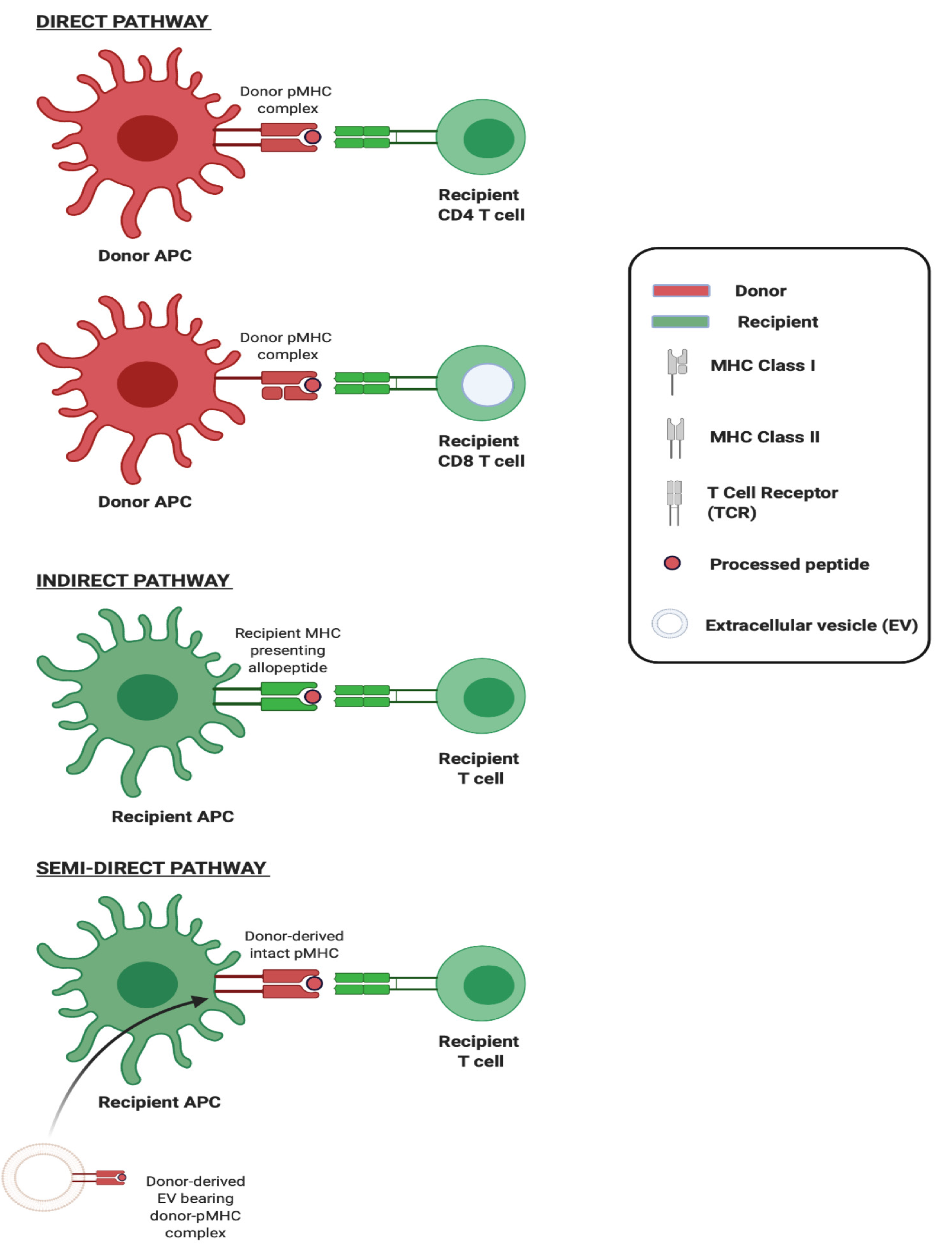Copyright
©The Author(s) 2020.
World J Transplant. Nov 28, 2020; 10(11): 330-344
Published online Nov 28, 2020. doi: 10.5500/wjt.v10.i11.330
Published online Nov 28, 2020. doi: 10.5500/wjt.v10.i11.330
Figure 2 Three pathways of allorecognition.
Schematic illustration of the three major pathways of allorecognition: Direct, indirect, and semidirect. In the direct pathway, intact non-self major histocompatibility (MHC) Class I and Class II on donor antigen-presenting cells (APCs) activates CD8 and CD4 T cells respectively. In indirect recognition, recipient APCs present processed donor allogeneic peptides in the context of self-MHC to recipient T cells. In the semidirect pathway, recipient APCs are cross-dressed with donor MHC, acquired from donor-origin extracellular vesicles for instance, which upon encounter activates recipient T cells. Created with BioRender.com. APC: Antigen-presenting cell; MHC: Major histocompatibility; EV: Extracellular vesicle.
- Citation: Mastoridis S, Martinez-Llordella M, Sanchez-Fueyo A. Extracellular vesicles as mediators of alloimmunity and their therapeutic potential in liver transplantation. World J Transplant 2020; 10(11): 330-344
- URL: https://www.wjgnet.com/2220-3230/full/v10/i11/330.htm
- DOI: https://dx.doi.org/10.5500/wjt.v10.i11.330









